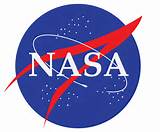Since NASA’s (United States National Aeronautics and Space Administration) conception in 1959, there have been 339 Astronauts to be selected by the agency, including the Original 7 Mercury Astronauts, to this date. Out of the 339, 61 percent have previous military service. NASA’s Astronaut Corps has had 21 previous openings, the last one being in 2013; the biggest group of Astronauts, consisting of 35 people and nine international astronauts, was in 1996. Openings of NASA’s Astronaut Corps usually occur two to four years after the previous opening. The shortest gap between groups was in 1985, Group 11 and 10 only had a year interval between the two; the longest time in between classes was nine years, Groups eight and nine.
The qualifications to be a NASA Astronaut are rigorous and far from easy. To start there are both physical and academic requirements. To apply to NASA as an astronaut, one must have at least a bachelor’s degree in a STEM (Science, Technology, Engineering, or Math) followed by at least three years of work experience in that field. This includes teaching grades K-12, holding a Master’s degree counts as one years, a Doctorate’s degree counts as three years. Optionally, instead of the three years of work experience one can apply with 1,000 hours of jet flight experience as the commander. However, NASA strongly suggests that one has a Master’s degree before applying. In addition to the academic and work prerequisites, there are also physical qualifications. Essential things include: 20/20 vision, blood under 140/90, and a height between 62 and 75 inches are a must. There are no age requirements however, the average age for an astronaut is 37; the youngest was 27, and the oldest was 77.
In short, teachers, scientists, military and civilian aviators, doctors, and engineers with a STEM degree can apply. An additional note is that it is very rare that an applicant is accepted into NASA’s Astronaut Corps, it is a sort of unwritten rule or just a general trend or linear regression; there is very strong correlation between accepted applicants and them holding, either a Master’s or a Doctorate’s degree.
To give perspective of the seductiveness of NASA’s program, as of July 2015 there are 46 active astronauts who are cleared for flight, and there are an additional 36 management astronauts, who help train and advise astronauts from mission control and other NASA training facilities, who are not cleared for flight.
NASA recently started accepting astronaut candidates, on December 14, and will continue to accept applicants for their 2015 class of Astronauts; this class will train with the 2013 class to fly missions to near-Earth-asteroids in preparation for the flight to Mars. The job opening can be found at usajobs.gov.
However with the election coming up, depending on who takes office in 2016, NASA might experience severe budget cuts that would put them out of commission for a while. Do keep in mind that NASA is one of the most successful agencies when it comes to results versus spending, they have developed technologies that have put us on the world stage for premiere engineering, medicine, math, agriculture, and much more.









